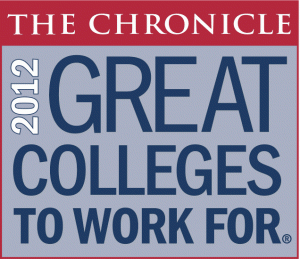When they embarked on the project, the five Hartford teens knew nothing about research methodology and had never been to a Farmers Market. Just weeks later, their ground-breaking research and recommendations could lead to healthier lives for urban youth and new marketing opportunities for small farming businesses in the region. The project was the first of its kind in New England to involve youth in Participatory Action Research (PAR) for food justice.
The innovative initiative, co-sponsored by the Institute for Community Research (ICR) and Hartford Food System, invited the small team of students to spend five intensive weeks taking a data-based look at the links between nutrition and teenagers in the city, and determine how they might make beneficial changes in their community. The students determined the precise path their research would take, and skilled mentors taught the methodology.
The five students – Chabely Nunez, Rahma Khadeer, Shawn Cannon, Andrew Walker and Benjamin Bowen – decided to evaluate two problems. They considered that teens in Hartford generally do not have places to “hang out,” and that what is otherwise considered to be a community gathering point – Farmers  Markets, which are filled with abundant nutritious food – rarely attract a teen audience. Looking at the two problems together, they reasoned, could identify how to make Farmers Markets teen-friendly, and respond to the nutritional needs of their peers.
Markets, which are filled with abundant nutritious food – rarely attract a teen audience. Looking at the two problems together, they reasoned, could identify how to make Farmers Markets teen-friendly, and respond to the nutritional needs of their peers.
In presenting the conclusions of their project to about 40 people at the ICR offices in Hartford, the students said of their topic choice: “We visited farmers markets and we saw that they weren’t a destination for teens, even though they are community spaces and have healthy food which would be good for teens.”
DEVELOPING DATA
The detailed 29-question survey they developed was given to 72 teens and 21 in-depth interviews were conducted. The students also visited locations including Billings Forge, Park Street and local community gardens. The PAR process led the students to: 1) build a foundation of knowledge 2) identifying the specific problem, 3) construct a research model, 4) learn and then use ethnographic research methods, 5) implement the research, and 6) use research findings to advocate for change. The methodology included systematic observation, pile sorting, surveying, in-depth interviewing, videography and photography.
In the survey responses, teens said they wanted comfortable places to sit, free wi-fi, and things to purchase in the places they hang out – and bathrooms, too. The research indicated that young people consider taste and price to be the most important qualities when they purchase their own food. Research also identified obstacles – farmers markets are not located in areas where teens already go, such as parks, and they are not open when teens might go, usually after 4:00pm. They interviewed market vendors, who seemed amenable to doing more to attract teens, but clearly hadn’t given it much thought in the past. They found that teens generally do not go to farmers markets with friends, or even as part of school curriculum.
FOUNDATION FOR ACTION
Interestingly, the students learned that more than half of teens who had been to a market said they had a positive experience, and 57% said they would go to a farmers market with friends. Over two-thirds of teens who had been to a market were satisfied with the food options available. Teens also like a place to sit, and beverage choices, which are not always available at markets. The action steps recommended by the teens include:
- Farmers markets should be in locations where teens hang out in order to draw more teens.
- Teach teens how to grow their own vegetables and fruit to sell at farmers markets and learn how to eat healthy.
- Advocate for teen-friendly farmers markets: teen-friendly entertainment, items to purchase that teens like to buy, wi-fi and places to sit in the market.
- Marketing at farmers markets should target teens. Farmers markets should encourage teens to be involved in marketing.
- Schools should increase teen awareness of farmers markets through after-school programs and curriculums.
- Teens should have more cooking and nutrition classes in their schools. There should be more connections between schools and farmers markets.
- In general, there should be more teen friendly spaces created in Hartford for teens to eat healthy prepared foods and hang out with friends.
The student team also noted that “if teens learned more about cooking, they might want to buy more vegetables sold at markets to cook with instead of prepared foods.”
Paige Nuzzolillo, ICR Project Coordinator, said the students “exceeded expectations, and worked unbelievably hard” to learn research methods, develop the research, analyze the data, and develop action steps. “They grew immensely in the process,” she emphasized, noting that along the way the participating students began eating healthier themselves as they learned more about nutrition issues.
The recommendations will be considered next by students participating throughout the school year in the Food Justice Youth Leadership Group of the Hartford Food System (HFS). Precisely what they’ll do, and how they’ll do it, is a determination to be made by the participating students, said Kat Vollono, youth coordinator with HFS, clearly energized by the possibilities.
Local community members on-hand to hear the students present their findings spoke favorably about the effort and the recommendations, and some appeared interested in exploring other ways to advance the action strategies.
University of Saint Joseph (USJ) Associate Professor of Pharmacy Practice and Administration Maria Summa was particularly interested in the research methodology, and the capacity of the PAR process to "build capacity for collaborative research partnerships and community-engaged research." As the concept of shared decision-making between patients and healthcare providers gains acceptance in healthcare delivery, Summa says approaches like PAR may have new applications in that field. Having researchers work "side-by-side with those who are affected by an issue" is a change from traditional research models, but could be the wave of the future. She was involved in the summer project through a faculty research grant from USJ.
A $10,000 grant from The Perrin Family Foundation supported the food justice project. Food justice seeks to ensure that the benefits and risks of where, what, and how food is grown, produced, transported, distributed, accessed and eaten are shared fairly across society.
The Institute for Community Research is a not-for-profit organization that conducts community-based research to reduce inequities, promote positive changes in public health and education. Hartford Food System is a not-for-profit that focuses on fighting hunger and improving nutrition in Hartford’s low income neighborhoods.
 According to the Pew Research Center's Internet & American Life Project, two-thirds of American adults earning less than $30,000 use the internet. In addition lower-income internet users (earning $25,000 or less) tend to spend more time on the internet than others, about 13 hours online per month.
According to the Pew Research Center's Internet & American Life Project, two-thirds of American adults earning less than $30,000 use the internet. In addition lower-income internet users (earning $25,000 or less) tend to spend more time on the internet than others, about 13 hours online per month.






































